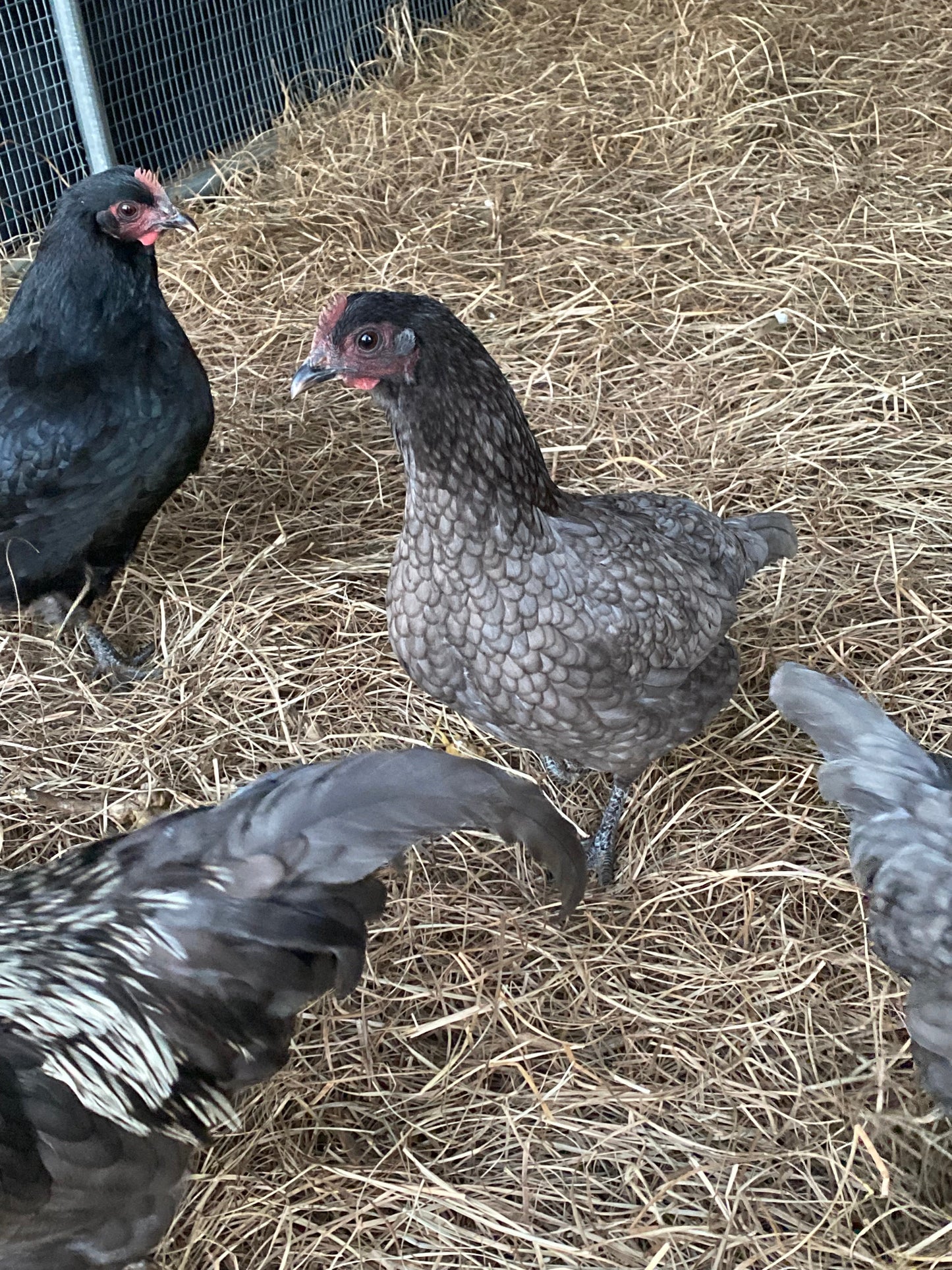Windmill Hill Hatchery
Silverudd's Blue hatching eggs
Silverudd's Blue hatching eggs
Couldn't load pickup availability
*SOLD OUT for 2024 season.
Silverudd's Blue was created in the 1980s by Martin Silverudd, a Swedish pastor. Silverudd's Blue was named at Martin Silverudd's swift passing - changed away from the Svensk Gronaggsvarpare (Swedish Green Egg Layer), which may be considered a working name. It has been mistakenly called Isbar, which is the name of a breed Silverudd created before the Silverudd's Blue. The name is set as a tribute to the breed's creator and refers to the gene for blue in plumage and the gene for blue shell color.
Greenfire Farms first imported Silverudd’s Blue from Sweden in 2011. Another line was imported in 2013, though many do not feel the second line had the preferred characteristics of the first import line. We spent a lot of time researching and based our stock on first imports only.
Egg Laying
Silverudd’s Blue are the only pure breed of chicken that lays a naturally green-tinted egg. All other green egg layers are hybrids. Eggs vary in shades of green: seafoam, sage, moss, and olive. Some eggs can also have small brown speckles over a green background. They’re good layers, and eggs are generously sized- medium-large.
Appearance & Disposition
They are a smaller framed bird that come in three colors: blue, black, and splash. Their eyes are dark and soulful.
If you’re familiar with blue/black/splash breeding, we choose our pairings accordingly. We do not breed splash to splash as this can result in dilution and washing. We prefer high contrast splash. We are also breeding for blacks with no leakage and dark blues.
Silverudd’s Blue are laid-back, very curious, and calm around people. They’re smart and savvy. Roosters are alert, and make excellent flock protectors.
_________________________________________________
We do not guarantee egg color. There is fluctuation in egg color for every breed. Our Silverudd’s Blue can lay a a variety of shades of green, including a grey-green, throughout their laying cycle. The first eggs after a break in laying or from a new layer are always the most saturated.








